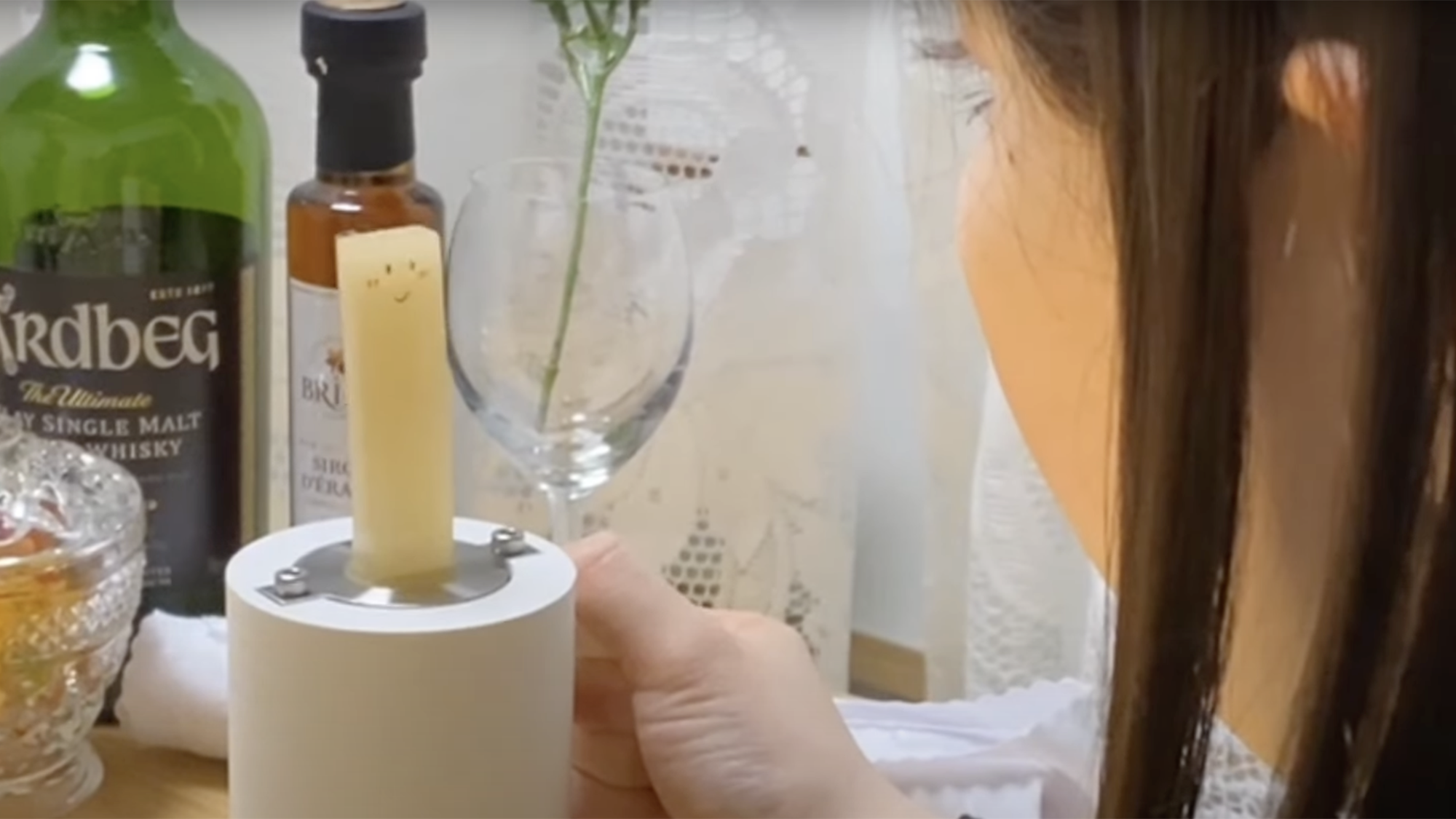

Remember the old reality show competition stunt of getting contestants to eat live bugs on primetime television? Consuming “food” while it’s still alive spans numerous cultures around the world. In Japan, for example, odorigui (or “dance-eating”) is a centuries’ old tradition often involving squid, octopus, and tiny translucent fish known as ice gobies. Diners pop these still-living creatures into their mouths, as the wriggling is part of the overall meal experience.
To potentially better understand the psychology and emotional responses associated with consuming odorigui dishes, researchers designed their own stand-in—a moving gelatin robo-food combining 3D-printing, kitchen cooking, and air pumps. The results appear not only tastier than your average reality show shock snack, but a potential step towards creative culinary and medical applications.
… And yet, judging from this video, it’s undeniably still a little odd.

Detailed in a study published earlier this month in PLOS One, a team at Japan’s University of Electro-Communications and Osaka University recently devised a pneumatically-driven handheld device to investigate what they dub “human-edible robot interaction,” or HERI. For the “edible” portion of HERI, researchers cooked up a gummy candy-like mixture using a little extra sugar and apple juice for flavor.
After letting the liquid cure in molds that included two hollow airways, the team then attached the snack to a coffee mug-like holder. The design allowed researchers to inject air through the gelatin in different combinations—alternating airflow between each tube produced a side-to-side wagging motion, while simultaneous inflation offered a (slightly unnerving) pulsating movement.
And then, the taste tests.
The team directed 16 Osaka University students to grab the device holding their designated, writhing soft robot morsel, place the edible portion in their mouth, allow it to move about for 10 seconds, then chomp. Another (possibly relieved) group of control students also ate a normal, immobile gelatin gummy. Following their meals, each volunteer answered a survey including questions such as:
– Did you think what you just ate had animateness?
– Did you feel an emotion in what you just ate?
– Did you think what you just ate had intelligence?
– Did you feel guilty about what you just ate?
Perhaps unsurprisingly, it seems that a meal’s experience can be influenced by whether or not the thing you just put in your mouth is also moving around in your mouth. Students described this sensation using the Japanese onomatopoeic terms gabu, or “grappling,” and kori-kori, meaning “crisp.” Movement also more frequently caused volunteers to feel a bit of guilt at eating a “still living” dish, as well as attach a sense of intelligence to it.
[Related: Scientists swear their lab-grown ‘beef rice’ tastes ‘pleasant’]
While only an early attempt at looking into some of the dynamics in odorigui, researchers believe more intricate soft robot designs can allow for more accurate experiments. Meanwhile, such research could lead to a “deepening understanding of ethical, social, and philosophical implications of eating,” as well as potential uses in medical studies involving oral and psychological connections. There’s also a possibility for “innovative culinary” experiences down the line, so who knows what might be coming to high-brow restaurants in the future—perhaps gyrating gyros, or wobbly waffles. Hopefully, nothing too macabre will wind up on menus. It’s certainly something researchers took into consideration during their tests.
“NOTE: During the experiment, we did not draw a face on the edible robot,” reads the fine print at the bottom of the demonstration video, presumably meaning they were just having a bit of fun with the project.
Which is good to hear. Otherwise, this whole thing might have come across as weird.
